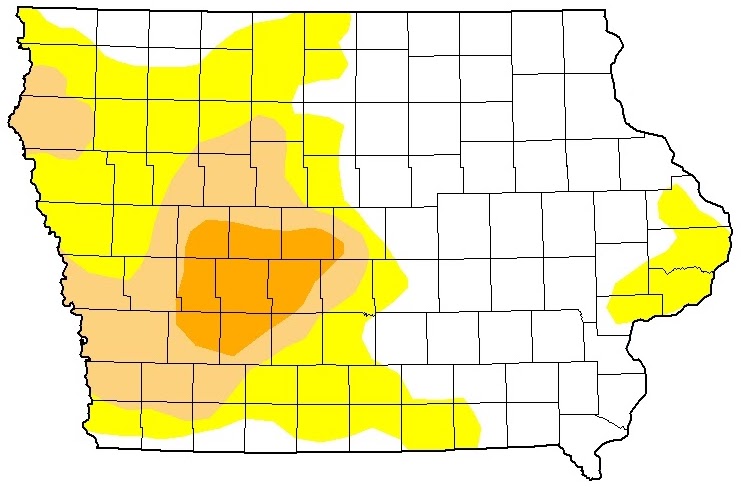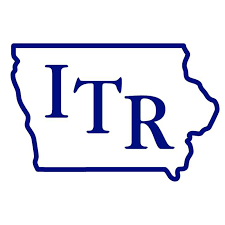Iowa’s rural economy continues to lag into recessionary levels in July

MICHAEL CRUMB Jul 20, 2020 | 8:05 pm
2 min read time
557 wordsAll Latest News, Economic Development, EnergyIowa’s economy continued to lag below neutral growth in July, in part because of fears of growing areas of drought in the state. Much of western Iowa is experiencing abnormally dry conditions as seen in yellow on this map released on July 16 by the U.S. Drought Monitor. Areas highlighted in tan are considered moderate drought, with orange representing severe drought conditions.
Iowa’s rural economy improved in July, but remains below neutral growth, in part because of continued low commodity prices and concerns over growing areas of drought across the state.
According to the Rural Main Street Index, released by Creighton University, Iowa’s index in July rose to 43.1, up from June’s index of 39.4. The index ranges from zero to 100, with 50 representing neutral growth.
The index is the result of a monthly survey of community bank presidents and CEOs in rural, agriculturally and energy-dependent areas in 10 states, focusing on about 200 rural communities with an average population of 1,300.
Overall, the index in the 10-state region increased to 44.1, well below neutral growth, but up from 37.9 in June, and well above the record low in April of 12.1.
July’s index represented the fourth consecutive month of recessionary economic conditions.
“Farm commodity prices are down by 12.5% over the last 12 months. As a result, and despite the initiation of $16 billion in USDA farm support payments, only 6% of bankers reported their area economy had improved compared to June while 17.6% said economic conditions had worsened,” Ernie Goss, the Jack A. MacAllister Chair in Regional Economics at Creighton University’s Heider College of Business, said in the report, released late last week.
Jim Eckert, president of Anchor State Bank in Anchor, Ill., cited concerns about the effect areas of expanding drought will have on the region’s farm economy.
“Our immediate area is in a dry pocket again this year,” he said in the report. “Crops look good but are under severe stress due to lack of rain.”
According to the latest U.S. Drought Monitor, released last Thursday, July 16, abnormally dry conditions exist across nearly all of western Iowa, and in several counties in east-central Iowa. Moderate drought conditions are expanding from southwest Iowa into areas of central and north-central Iowa, while a pocket of severe drought has expanded from southwest Iowa into central Iowa, just west of Des Moines.
Iowa’s farmland-price index in July grew to 49.2, up from 48.3 in July. Iowa’s new-hiring index for July fell to 43.4 from 51.9 in June. Compared with the pre-COVID-19 level, the Iowa Rural Mainstreet economy is down by 57,000 jobs, or 8.6%, the report showed.
The overall July report for the 10-state region also showed:
- The overall index advanced to a weak level and remained below pre-COVID-19 levels.
- Compared with June economic conditions in their area, approximately 6% of bank CEOs reported improvements, while 18% detailed deterioration.
- This month, bankers estimated that farm loan defaults would rise by 5% over the next 12 months. That’s up slightly from 4.8% registered one year ago.
- Approximately 38% of bankers reported a decline in customer visits due to the coronavirus.
- Almost one-third of bank CEOs indicated that the coronavirus had reduced the number of farm loan applications.
- Employment for the Rural Mainstreet economy was down by 372,000, or 8.5%, compared with pre-COVID-19 levels.











